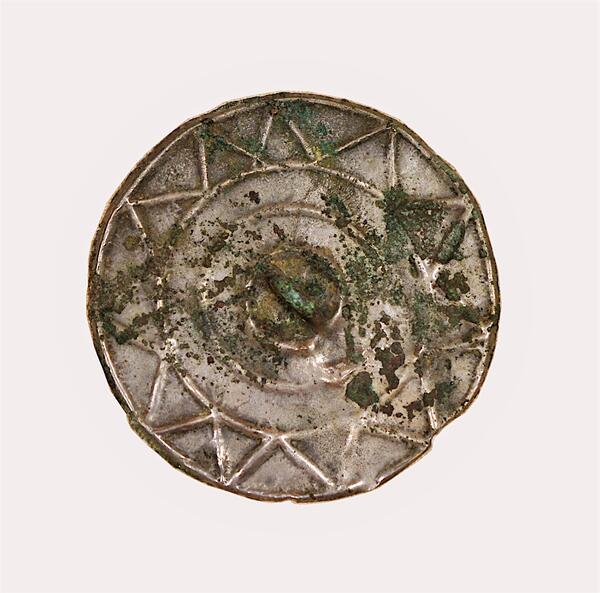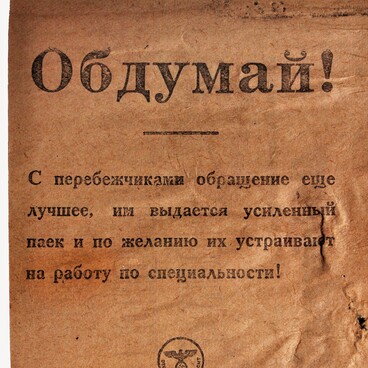In the 8th–9th centuries, the northwestern boundaries of the Khazar Khaganate, a major ancient state, passed through the territory of Belgorod region. Here lived Alano-Bulgarian tribes, which formed a special high culture — Saltovo-Mayaki, or Saltovsky.
The Alans lived on the banks of the Korocha and Nezhegol rivers, where the Dmitrievsky archaeological complex is now located. In the 1970s, Professor Svetlana Pletnyova, a famous Soviet archaeologist, carried out the excavations, which made it possible to specify what the settlement looked like and to reconstruct its inhabitants’ lifestyle. A metal round plate with an ornament was among the finds; it was used as a mirror and was also worn on the neck as an amulet.
During the excavations, the researchers found that there was a white-stone fortress of a local rich khan on a steep chalk slope above the Korocha river. The fortress walls were made of chalkstone, and their width reached nearly five meters. The escarps — special terraces with palisades — were built on the slopes. A four-meter deep ditch was dug next to the outer fortification wall. Only the half-destroyed wall foundation and the stone rampart along the perimeter have survived to the present day.
Near the fortress was a burial ground. The Alans buried their dead kinsmen in catacombs. Things were put into the burial chamber together with the deceased. Weapons, horse harnesses, tools, and vessels with food and water were for men. Dishes and jewelry were for women. In the Shebekino History and Art Museum a single burial of a male warrior from the catacomb of Dmitrievsky burial ground is also displayed.
Near the fortress and burial ground, archaeologists found three settlements and proved that the Alans lived in semi-dugout shelters and yurts. Local inhabitants were cattle breeders and artisans, but they gradually adopted sedentary agriculture lifestyle.
Various handicrafts, especially pottery, were developed in Dmitrievsky settlement. Archaeologists have found many ceramic products of the Saltovo-Mayaki culture. They were distinguished by the black or gray color of the broken fragments, the glossy surface, the decoration featuring geometric figures, people, and animals, as well as the handles often made in the form of a horse. The horse played a huge role in the life of nomads: it was not only a means of transportation — it was impossible to farm or fight without a horse.
The Alans lived on the banks of the Korocha and Nezhegol rivers, where the Dmitrievsky archaeological complex is now located. In the 1970s, Professor Svetlana Pletnyova, a famous Soviet archaeologist, carried out the excavations, which made it possible to specify what the settlement looked like and to reconstruct its inhabitants’ lifestyle. A metal round plate with an ornament was among the finds; it was used as a mirror and was also worn on the neck as an amulet.
During the excavations, the researchers found that there was a white-stone fortress of a local rich khan on a steep chalk slope above the Korocha river. The fortress walls were made of chalkstone, and their width reached nearly five meters. The escarps — special terraces with palisades — were built on the slopes. A four-meter deep ditch was dug next to the outer fortification wall. Only the half-destroyed wall foundation and the stone rampart along the perimeter have survived to the present day.
Near the fortress was a burial ground. The Alans buried their dead kinsmen in catacombs. Things were put into the burial chamber together with the deceased. Weapons, horse harnesses, tools, and vessels with food and water were for men. Dishes and jewelry were for women. In the Shebekino History and Art Museum a single burial of a male warrior from the catacomb of Dmitrievsky burial ground is also displayed.
Near the fortress and burial ground, archaeologists found three settlements and proved that the Alans lived in semi-dugout shelters and yurts. Local inhabitants were cattle breeders and artisans, but they gradually adopted sedentary agriculture lifestyle.
Various handicrafts, especially pottery, were developed in Dmitrievsky settlement. Archaeologists have found many ceramic products of the Saltovo-Mayaki culture. They were distinguished by the black or gray color of the broken fragments, the glossy surface, the decoration featuring geometric figures, people, and animals, as well as the handles often made in the form of a horse. The horse played a huge role in the life of nomads: it was not only a means of transportation — it was impossible to farm or fight without a horse.



